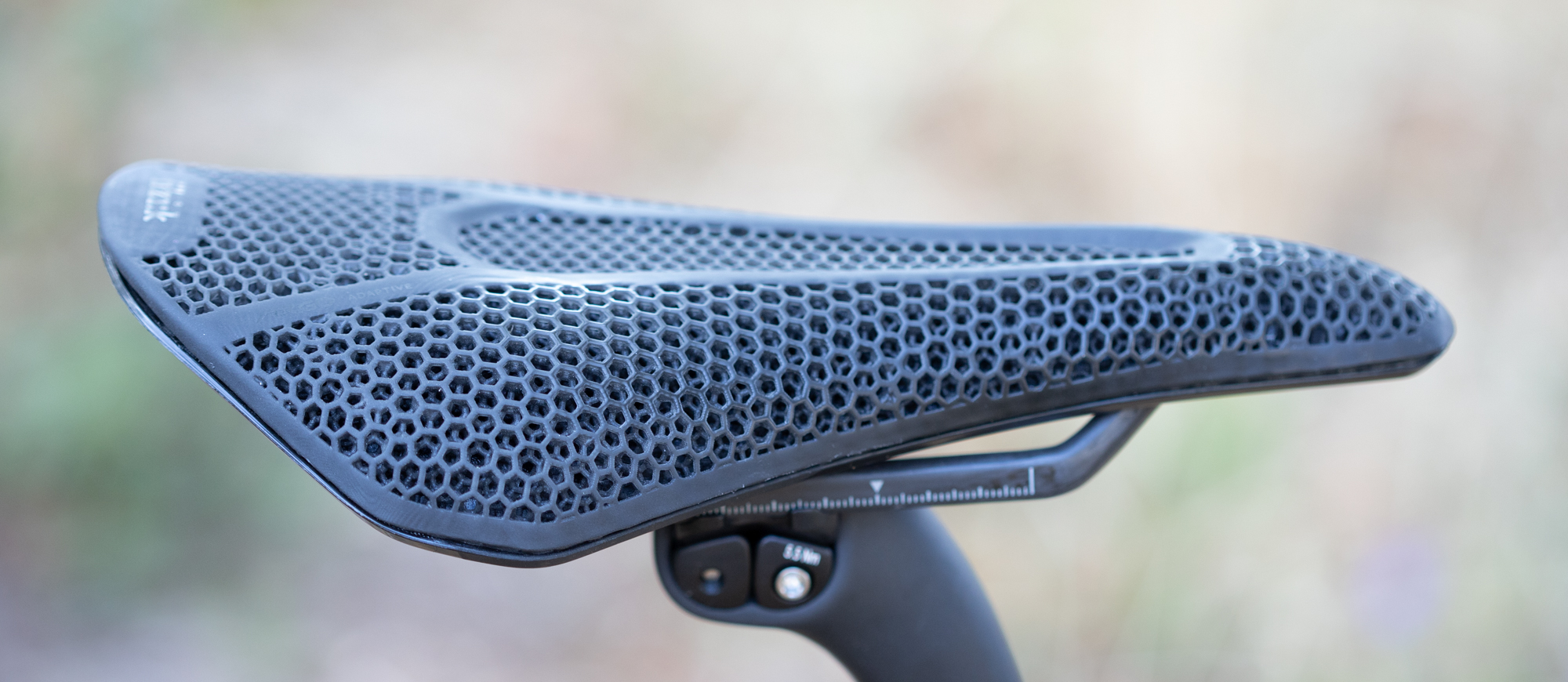Cyclingnews Verdict
3D printing a saddle allows for a performance saddle that’s softer than you expect, and the Fizik Argo shape is a nice balance of short but not stubby too. Given that 7x10 rails are not a standard size, just make sure your bike will work.
Pros
- +
3D printed saddles are softer than typical performance saddles
- +
Second generation design allows for multiple densities
- +
lots of room to move your sit bones around and still feel comfortable
- +
Easier to clean than competing 3D saddles
Cons
- -
non-standard 7x10 saddle rails
You can trust Cyclingnews
Saddles are very much a personal preference but there are broad industry trends. It hasn't been long since the concept of a short nose saddle hit the market and now they completely dominate our list of the best road bike saddles. It's a design that's been a hit with consumers even as some have grumbled about the loss of the nose as a way to control the bike. Then, on the manufacturing side, additive manufacturing, otherwise known as 3D printing, has been even more recent.
So far 3D printed saddles have been more of a bit player in the overall market. They definitely haven't taken over the way that short nose saddles have. Part of that is so far the technology is only offered on the uber expensive models from the few companies offering it. There hasn't been much economy of scale and the design process was slow with a lot of limitations. The second generation is starting to show up though and things are changing. One of the offerings available in that second generation is the Fizik Vento Argo R1 Adaptive and we've had a chance to spend time with it. If you are looking for a seriously high-end performance saddle keep reading to see if this second gen offering from Fizik should be on your radar.
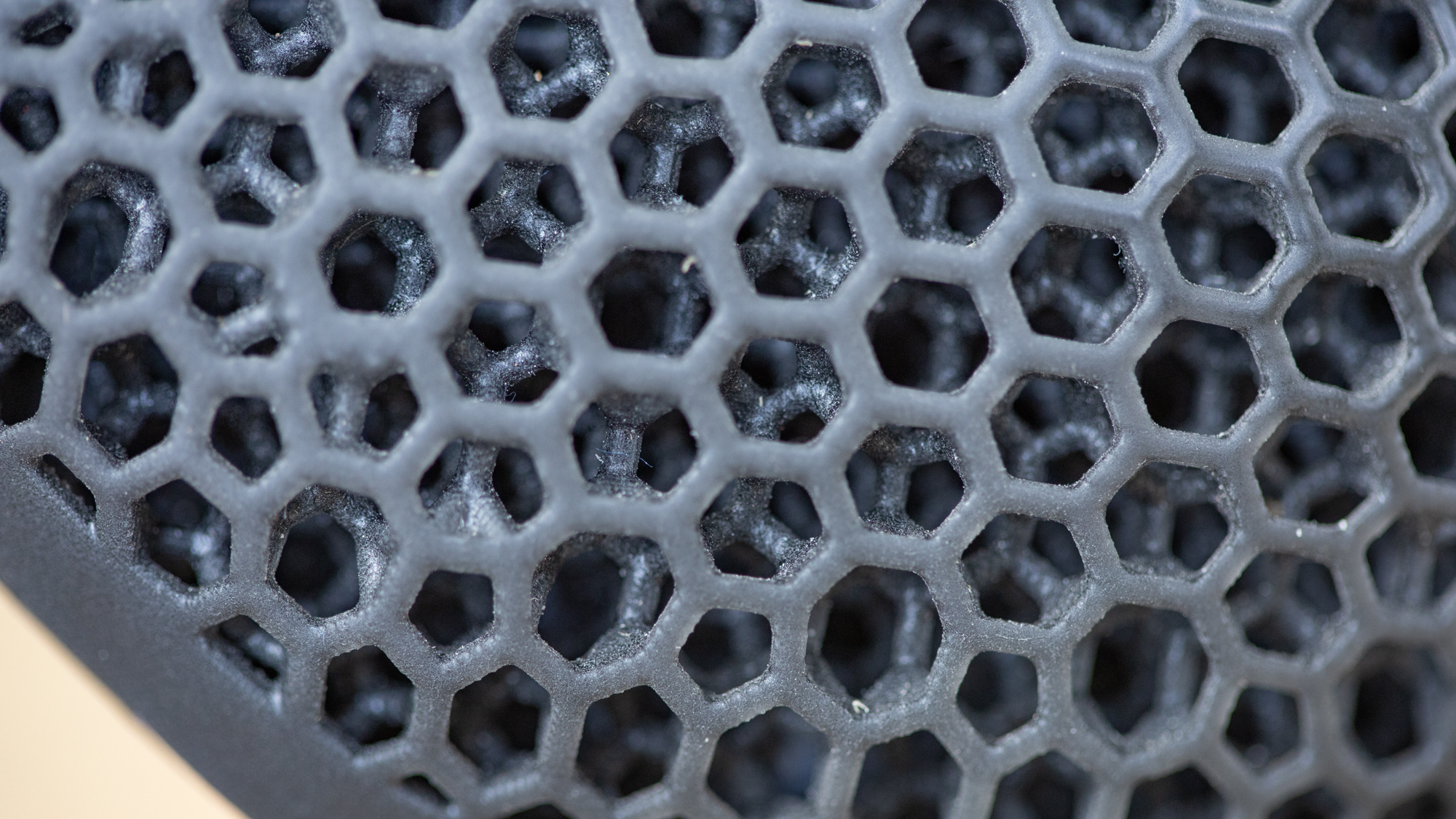
Design and aesthetics
Before we dive into the technical design details, there has to be a discussion of the aesthetics. Without a doubt, riding with a 3D printed saddle will get you noticed. Out of all the pieces people ask about, the 3D printed saddles come up almost more than anything else. The Vento Argo R1 Adaptive drops the greenish colour option that the previous Antares Versus Evo 00 Adaptive offered but it's still unmistakably 3D printed and it never fails to grab people's attention.
Along with the other colour option on the previous Adaptive saddles from Fizik, there was also a distinctive strip down the centre that no longer exists in this second-generation product. As it turns out, that strip of carbon in the first generation is a clever solution to a manufacturing problem. The company that produces the saddles for Fizik, and for Specialized, is a Silicon Valley company that goes by the name 'Carbon'. 3D printing is still very much a cutting-edge technology and like anything, it continues to evolve. The first-generation technology allowed for the lattice style design that marks the soft but supportive feeling of a 3D printed saddle but there were limits to what it could do.
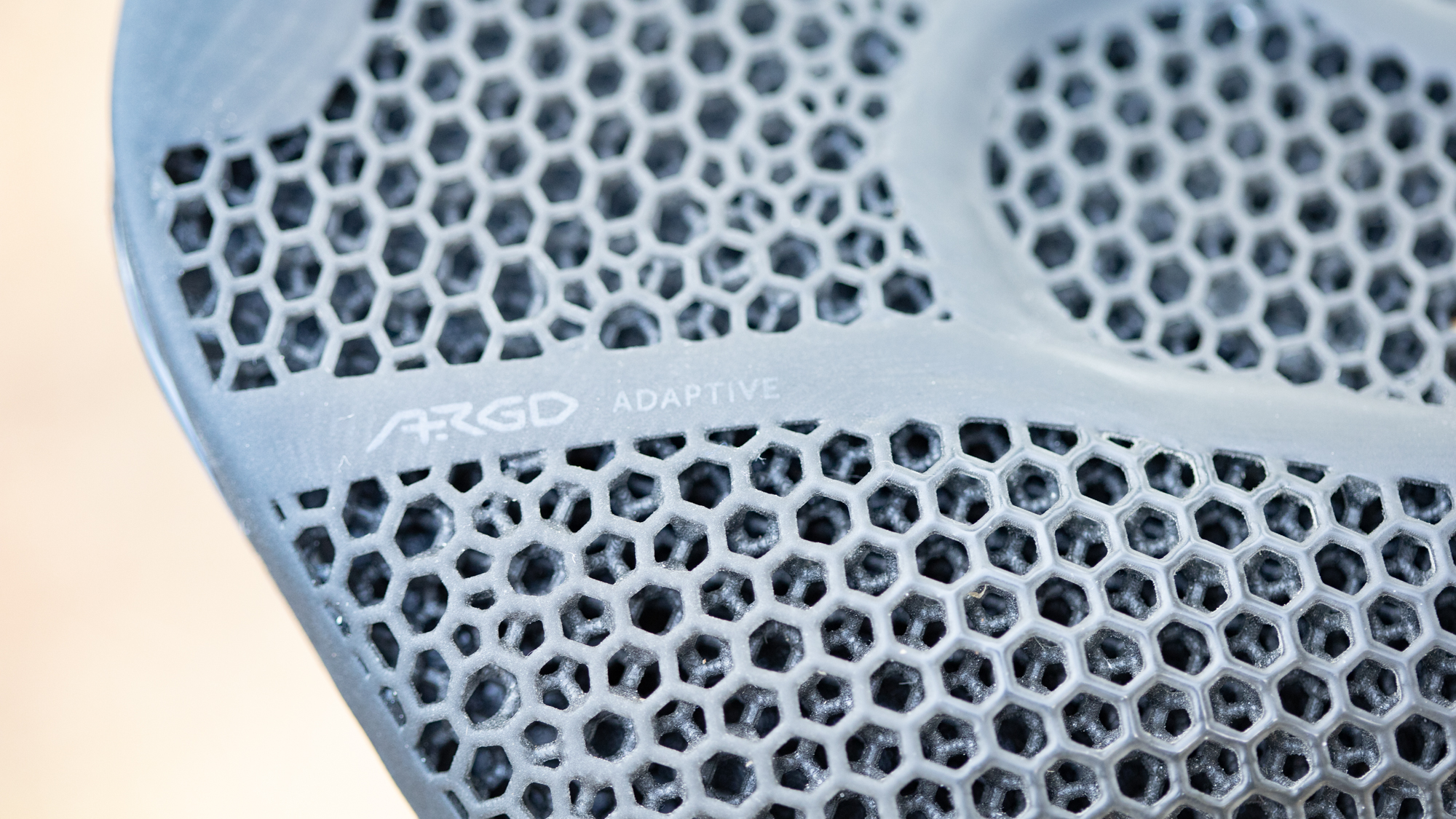
The biggest limitation of the first generation was that the whole structure had to be the same density. Fizik takes pride in the extensive pressure mapping data the brand has built over years of experience creating saddles but in 2019 when the first saddles hit the market it couldn't make use of that data. In contrast Specialized solved the problem by creating a saddle in a way that worked with a single density throughout.
As Carbon has continued to innovate its production capabilities, it's opened up tighter integrations with Fizik. The first saddle required a very slow back and forth workflow without much automation. Today there's a new design engine that helps to automate moving from the pressure mapping and testing data to a final design.
It’s just one piece though, there have also been changes in the core production capabilities. Carbon is now able to change densities as needed. The combination of the tighter partnership and upgraded production capabilities means a more sophisticated saddle. Argo Adaptive doesn't need a cutout because it’s able to use softer padding where it's needed. That, in turn, adds structure to the whole design and leads to better pressure distribution and increased longevity.
The latest race content, interviews, features, reviews and expert buying guides, direct to your inbox!
The Antares design is that of a more traditional saddle and it's an inherently limited approach to what's possible with 3D printing. At the time of release Fizik was clear that the Antares was a "first step into personal and athlete-data-driven design and engineering." The Argo is the next step along the same path.
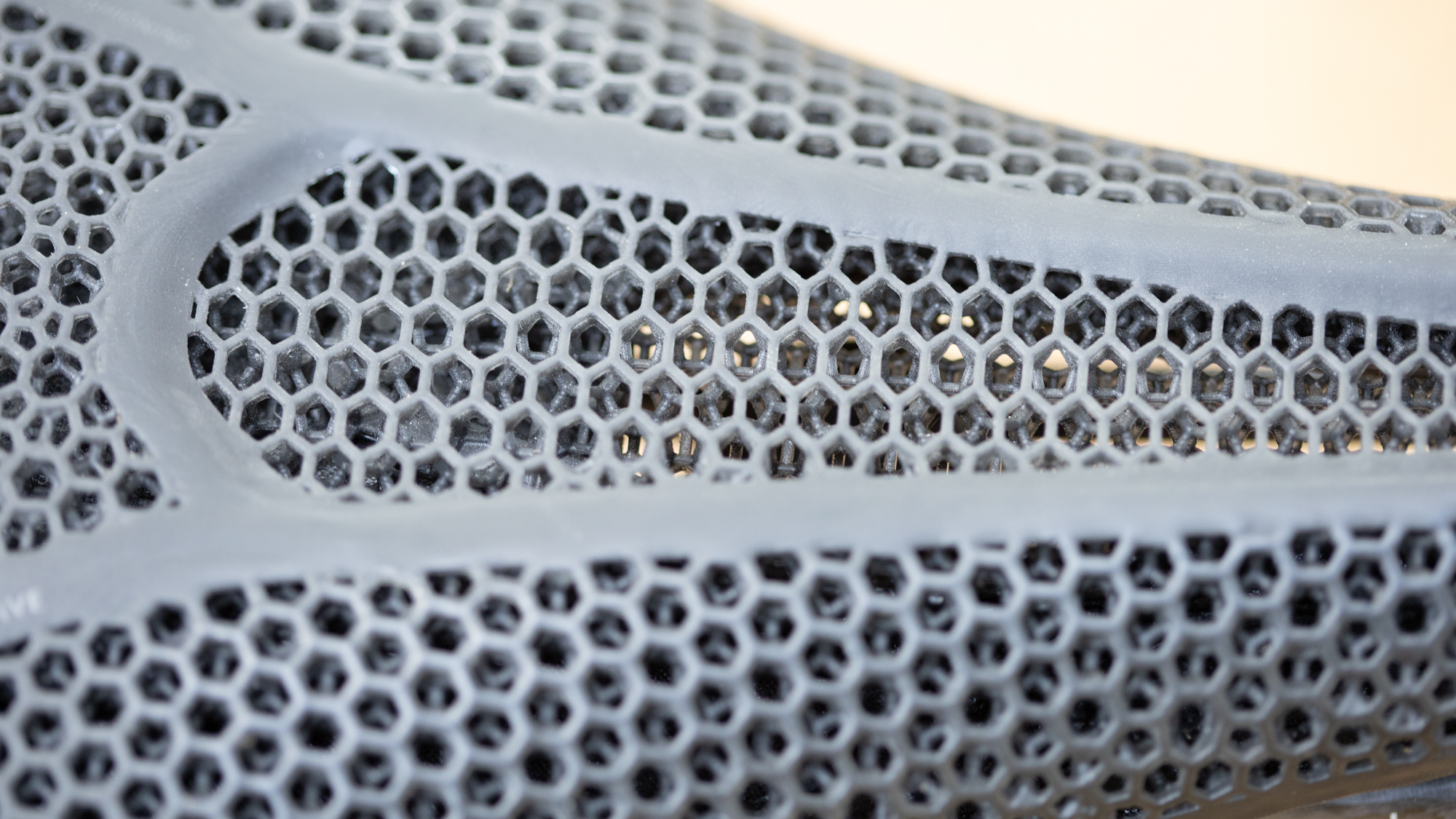
Performance
Let's be clear, Specialized found a way to create pressure mapped zones in the S-Works Power with Mirror technology. It then refined that process further in their second-generation S-Works Romin Evo with Mirror. The Fizik offerings aren't completely unique in that respect, but they are different. Sit down on a Power with Mirror technology and the first thing you notice is how soft it is. For riders who have been using performance saddles that are hard as a rock, it's groundbreaking. The shape isn't something that works for everyone though.
With the Vento Argo R1 Adaptive, Fizik offers a unique take on what a short nose saddle means. The simple way to say it is that it's not actually that short. The Specialized Power saddle is only 240mm long and the Prologo Dimension, another short nose saddle, is about the same length. For a point of reference, my favourite traditional style saddle is the Berk Composites Lupina and it measures 280mm. The Vento Argo is shorter but only by 15mm at 265mm long.
Like I said, with the Vento Argo, Fizik is playing with the whole concept of a short nose saddle. It's short but not by much. The bigger difference is in how it's shaped compared to a traditional road saddle. The nose is drastically shorter if you readjust what the nose of a saddle means. In a traditional saddle, using the Berk as an example again, it takes around 150mm before it starts to swell from the nose to the seat area. The Vento Argo starts to sweep outwards almost immediately behind the tip. It also gets to the widest section about 40mm ahead of the Berk.
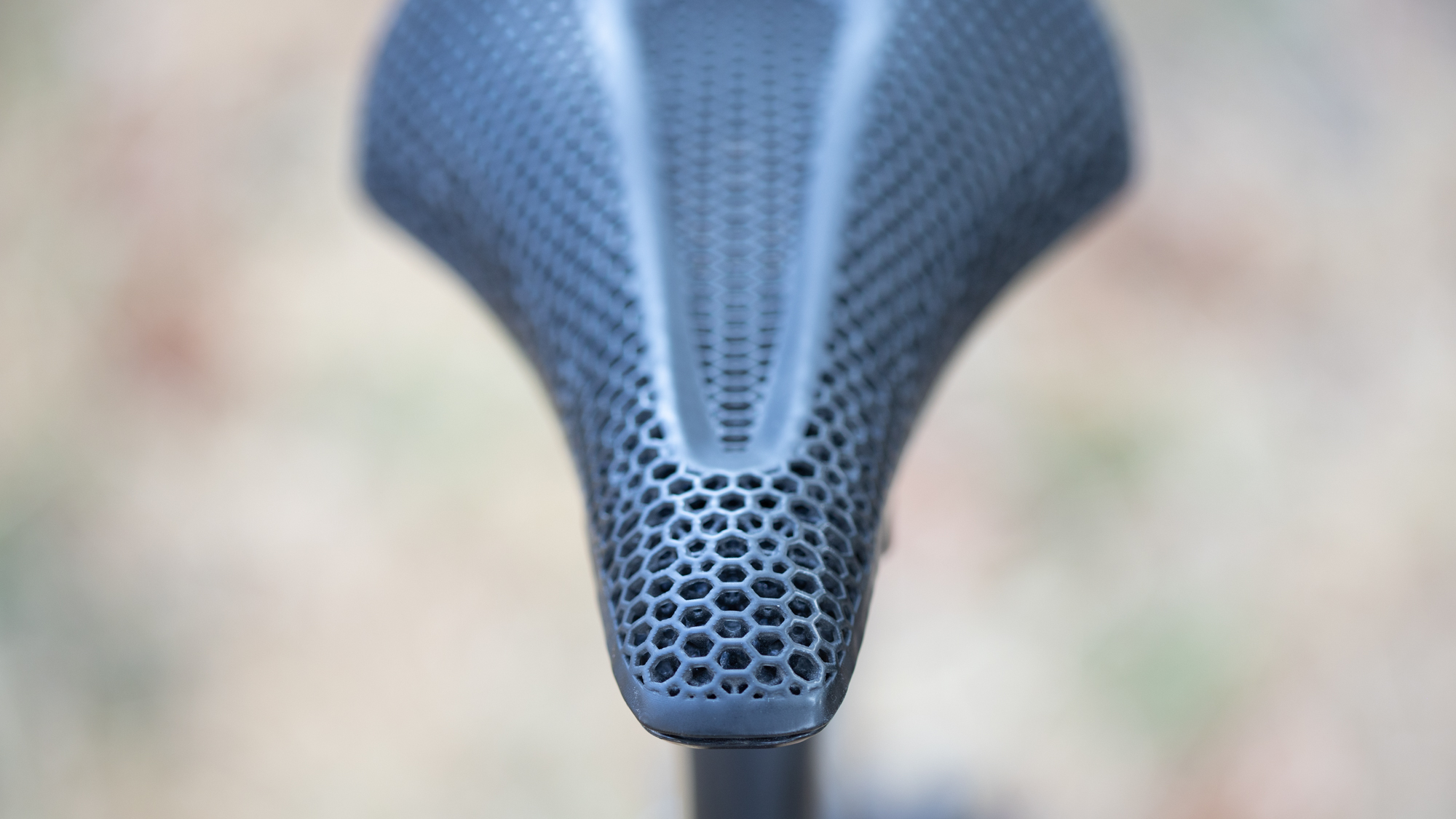
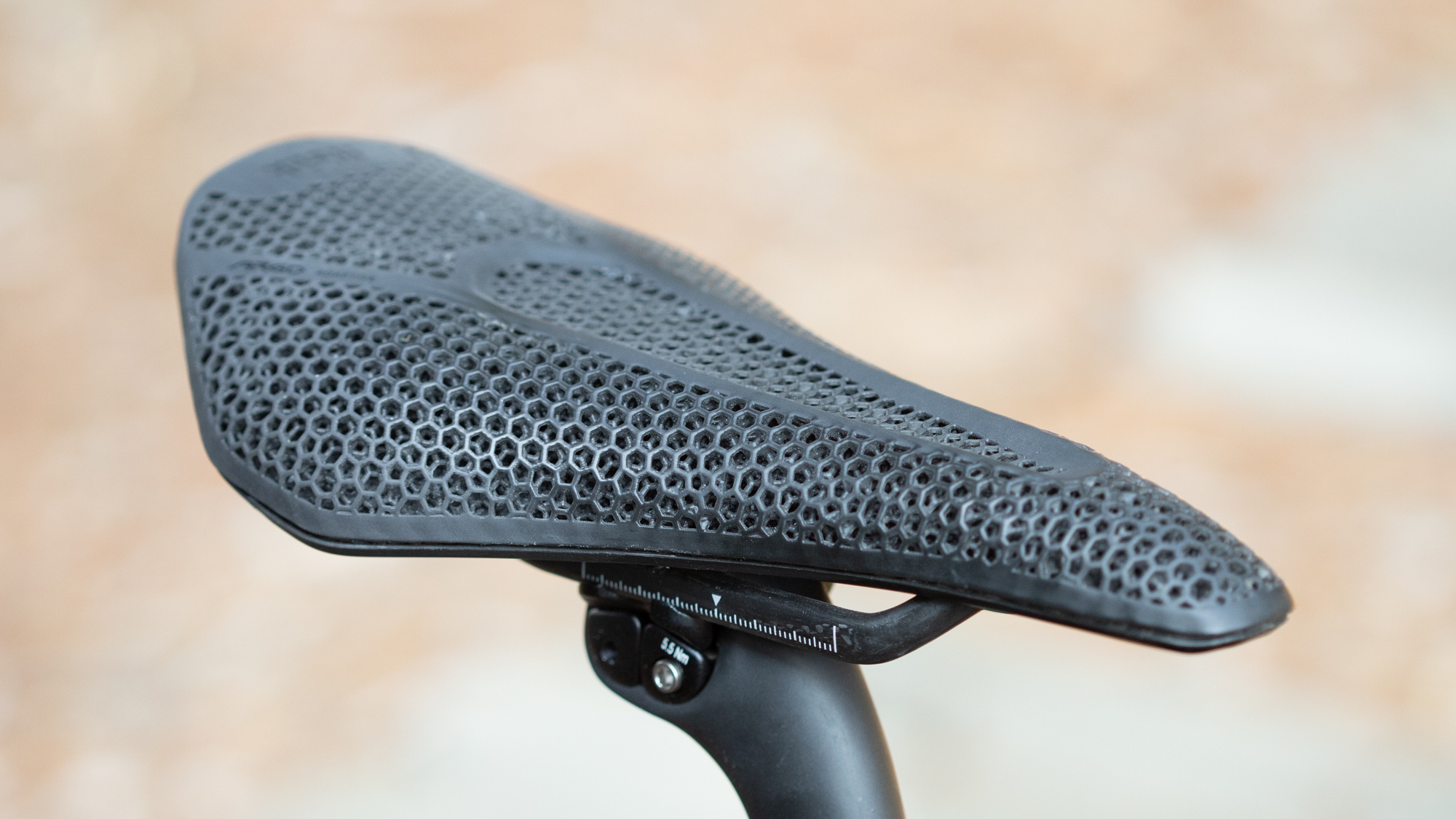
The result of all this reconceptualizing is that there is a larger sweet spot in the saddle. If I get down low and really push my pace, I naturally move forward but with the Vento Argo I don't start to feel out of place. There's still plenty of room farther back though so if I mellow out for the last few miles of a ride I can also sit back farther and not feel out of place there either. This differs from a shorter saddle where you either move the saddle forward and change your fit or keep it farther back and essentially chop off the nose.
This vision of what a short saddle actually means isn't unique to this saddle. There's both an Adaptive version, signifying a 3D printed manufacturing process, and a regular Vento Argo. The difference between them is that the Adaptive version is, like the Specialized Power with Mirror, softer. There's a lot of nuance in the Fizik Adaptive though. The edges are almost as stiff as the non-adaptive version while the centre is very soft. Another big change is that the Adaptive version doesn't have a cut-out and instead trades the missing material for the softest material in the design. Fizik says that it adds longevity, and given that cut-out saddles almost always fail around the cut-out, my experience says they are probably correct.
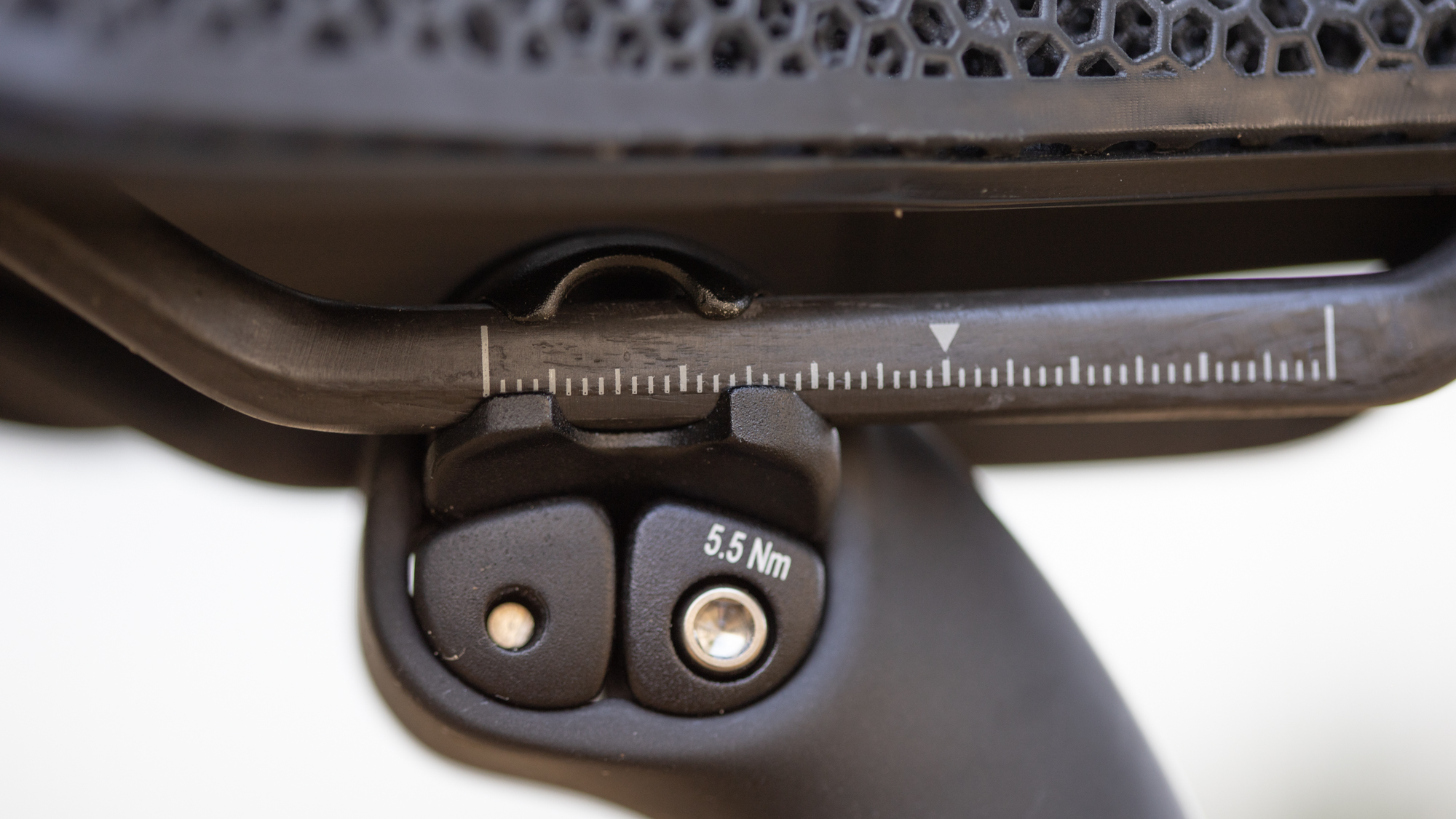
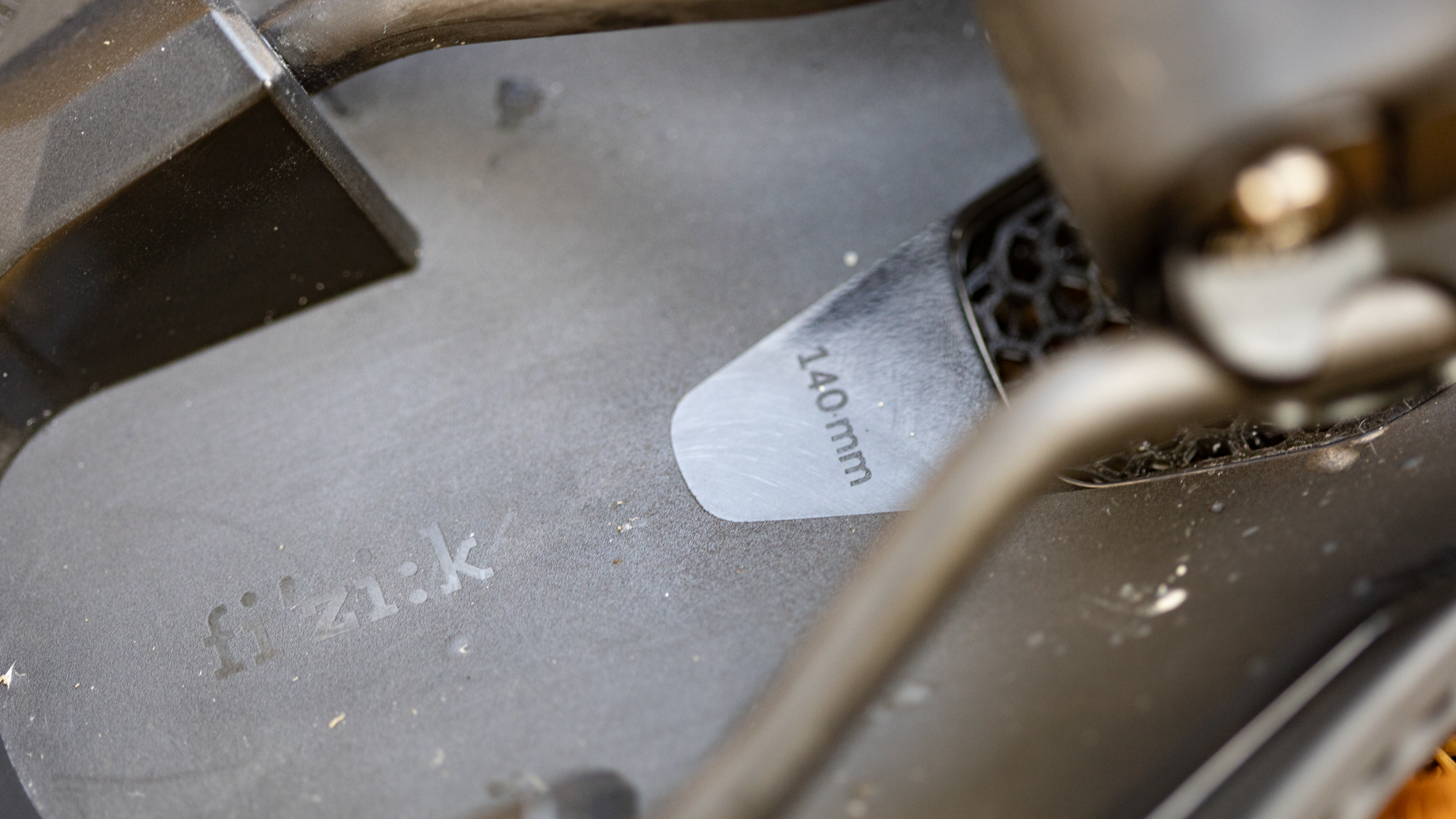
Verdict
When it's time to sit on the Fizik Vento Argo R1 Adaptive what's important to understand is that it's not your typical short nose saddle. It is shorter than a traditional shape but mostly the nose is shorter and the saddle swells much earlier. If you like to move around on a saddle a lot it's a good choice. Choosing the Adaptive version gets you more specific padding where Fizik thinks it's needed and it means a stronger saddle without a cutout.
The upsides are that it's less expensive than the Specialized Power with Mirror technology for the same 190 grams and carbon rails. It's also a lot easier to clean. The downsides are that it's not as soft. The biggest downside though is the size of the rails.
There are very few seat posts that can fit a 7x10mm rail. Typically carbon saddles use a 7x9 rail and most brands have adapters for that size or use a clamping style that doesn't care. Working with 7x10 is very difficult and both the Orbea Orca Aero and Look 795 Blade RS I have available were not compatible. Enve is one brand that is compatible with 7x10 rails so if you are considering a new Enve Melee, all of the Fizik carbon saddles will work.
| Design and aesthetics | 3D printed saddles are always flashy affairs that standout with their web style top and this one is even a bit more so. The Antares Adaptive is a better looking saddle though. | 9/10 |
| Specification | 3D printed saddles also tend to be on the heavier side and once again, that’s the case here. It matches the competition but it’s not unique. | 7/10 |
| Comfort | This is an especially comfortable saddle and it’s comfortable in more situations than most. | 10/10 |
| Performance | Pretty exceptional in its ability to be all things all the time. Stiff and comfortable when you want to hammer but also comfortable on recovery rides and there’s thought given to longevity. | 10/10 |
| Value | Specialized is significantly more expensive for their competitor and even the other Fizik Adaptive is more expensive. It’s hardly a bargain but the technology is obviously getting cheaper. | 9/10 |
| Overall | Row 5 - Cell 1 | 88% |
Tech Specs: Fizik Vento Argo R1 Adaptive
- Price: £249.99 (plus import duties) / $299.99 / €299
- Length: 265 mm
- Width: 140 mm/150 mm
- Height at 75 mm width: 45.5 mm
- Length from nose to 75mm width: 114 mm
- Weight: 190 g / 196 g
- Rail: 10x7 mm
Josh hails from the Pacific Northwest of the United States but would prefer riding through the desert than the rain. He will happily talk for hours about the minutiae of cycling tech but also has an understanding that most people just want things to work. He is a road cyclist at heart and doesn't care much if those roads are paved, dirt, or digital. Although he rarely races, if you ask him to ride from sunrise to sunset the answer will be yes.
Height: 5'9"
Weight: 140 lb.
Rides: Salsa Warbird, Cannondale CAAD9, Enve Melee, Look 795 Blade RS, Priority Continuum Onyx
